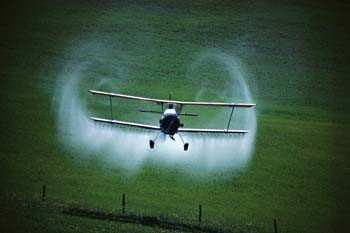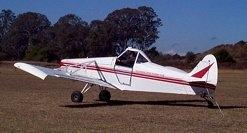Thu, May 15, 2014
Calls For Stronger Collaboration Between Regulators And Industry
The NTSB has released findings from its Special Investigation Report on the Safety of Agricultural Aircraft Operations. As a result of the safety issues identified in the study, the NTSB issued eight safety recommendations to the FAA and the National Agricultural Aviation Research & Education Foundation urging the two organizations to work together to develop and distribute agricultural operations-specific guidance on fatigue management, risk management, aircraft maintenance, and pilot knowledge and skills tests.

Agricultural operations, a niche group within the general aviation community, are subject to many safety hazards because they fly low enough to have to be concerned about obstacles such as power lines, communications towers, and meteorological evaluation towers. While these operations have historically ranked sixth or seventh among general aviation sectors in terms of hours flown, they have ranked third in terms of the number of annual accidents. Based on a review of these data and the findings from several agricultural operation accident investigations, last year, the NTSB initiated a special investigation to better understand the issues affecting the industry. During the 2013 aerial application season, the NTSB investigated 78 accidents, which included gathering information in the areas of pilot work and sleep schedules, pilot training and experience, and aircraft maintenance.
“Ag operations are inherently flown at low altitudes, often close to obstacles and hazards. That kind of flying requires rigorous risk assessment and risk management to operate safely,” said NTSB Board Member Earl Weener.

Investigators found that collisions with obstacles are a prevailing concern in the industry. In addition to the special report and recommendations, the NTSB issued a new Safety Alert, “Preventing Obstacle Collision Accidents in Agricultural Aviation.” The alert encourages ag-operators to conduct thorough preflight and aerial surveys, use technology to identify and maintain awareness of obstacles, and have a better understanding of the performance limitations and requirements of their aircraft. A companion Video Safety Alert was created and released to help inform and educate pilots, operators, and maintenance personnel.
(Images from file)
More News
Terminal Radar Service Area Airspace surrounding designated airports wherein ATC provides radar vectoring, sequencing, and separation on a full-time basis for all IFR and participa>[...]
Aero Linx: Utah Back Country Pilots Association (UBCP) Through the sharing experiences, the UBCP has built upon a foundation of safe operating practices in some of the most challen>[...]
From 2010 (YouTube Edition): Imagine... Be The Change... Inspire FROM 2010: One of the more unusual phone calls I have ever received occurred a few years ago... from Anousheh Ansar>[...]
(Pilot) Felt A Shudder And Heard The Engine Sounding Differently, Followed By The Engine Chip Detector Light On April 14, 2025, about 1800 Pacific daylight time, a Bell 206B, N1667>[...]
Also: AMA Names Tyler Dobbs, More Falcon 9 Ops, Firefly Launch Unsuccessful, Autonomous F-16s The Air Force has begun ground testing a future uncrewed jet design in a milestone tow>[...]
 ANN's Daily Aero-Term (05.07.25): Terminal Radar Service Area
ANN's Daily Aero-Term (05.07.25): Terminal Radar Service Area ANN's Daily Aero-Linx (05.07.25)
ANN's Daily Aero-Linx (05.07.25) Classic Aero-TV: Anousheh Ansari -- The Woman Behind The Prize
Classic Aero-TV: Anousheh Ansari -- The Woman Behind The Prize NTSB Prelim: Bell 206B
NTSB Prelim: Bell 206B Airborne-NextGen 05.06.25: AF Uncrewed Fighters, Drones v Planes, Joby Crew Test
Airborne-NextGen 05.06.25: AF Uncrewed Fighters, Drones v Planes, Joby Crew Test




